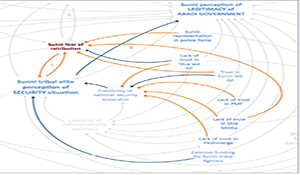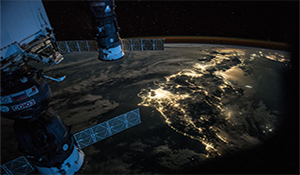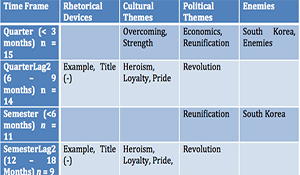Whole of Government Approach to Conflict
R4 Question #2: How could DoD and DoS be better postured to address regional and world conflicts to ensure a whole of government approach to identify and synchronize lines of effort in both planning and execution? Author | Editor: Canna, S. (NSI, Inc). Executive Summary Not many experts were willing to tackle this problem of […]
Continue ReadingIraq: Coalition or Bilateral Approach?
Question (R6.3): What is most favorable for the stability and the future of Iraq after the defeat of Da’esh: continued presence of an international Coalition or normal state-to-state bilateral relations? If a Coalition is the preferred option, what could be the “unifying factor” for a post-OIR coalition in Iraq and what situations could exist/emerge to […]
Continue ReadingNew Iran Strategy
Question (R6.6): How does USCENTCOM, working within a whole of government approach, coordinate military operations in support of the change in approach towards Iran from the previous to the current administration? Author | Editor: Jafri, A. (NSI, Inc). Executive Summary As battlefield successes actualize, decision makers have an opportunity to align tactical and operational policies […]
Continue Reading
Building Partner Capacity: Iraq
Question (R6.10): What can the U.S. and Coalition partners realistically do to enable Iraqi Security Forces (ISF) to combat a long-term ISIS insurgency? Recognizing the enormous resources the U.S. poured into the ISF from 2003 until 2011, only to see much of the force collapse in 2014, what can we do to avoid making the […]
Continue ReadingCompetition Short of Armed Conflict with a Regional Power
Question (R6.7): Are there examples from US history of competition short of open conflict1 with a regional power? What lessons exist that may be applied to resolving competing US/Iran objectives short of open conflict? Which examples are most relevant—pre- or post-World War II? Author | Editor: Polansky (Pagano), S. (NSI, Inc.) Executive Summary The experts […]
Continue ReadingGlobal Power Competition
Question (R6.2): In the event that the US/Coalition is challenged by another global power [Russia for the purposes of this response], what are the second and third order effects in the USCENTCOM area of responsibility? Author | Editor: Jafri, A. (NSI, Inc). Executive Summary As Russia continues to challenge United States’ power and influence around […]
Continue Reading
Strategic Risk in the Space Domain
[Q16] Which international actors currently have the greatest strategic risk in the space domain? What affordable non-space alternatives are there to mitigate or avoid that strategic risk? A Virtual Think Tank (ViTTa)® Report. Author: George Popp (NSI, Inc.) Summary Response This report summarizes the input of 15 insightful responses contributed by space experts from National […]
Continue Reading
Smoke, Mirrors, and Mayhem: The Good Fight Remixed
NSI Submission to the Army University Press’s Mad Scientist Initiative: “Smoke, Mirrors and Mayhem: The Good Fight Remixed”. Author | Editor: Macaulay, A. & Stevenson, J. (NSI, Inc.). The Army University Press created the Future Warfare Writing Program to generate ideas about possible complexities of future warfare, as presented in the U.S. Army Operating Concept. […]
Continue Reading
Trajectory of U.S./North Korean Nuclear War
The Trajectory of U.S./North Korean Nuclear War: Insights from Kim Jong Un’s Rhetoric. Author | Editor: Kuznar, L. (NSI, Inc.). Executive Summary Hours after the Washington Post broke the story that North Korea may have miniaturized a nuclear warhead, enabling its ICBM to deliver a nuclear blow to U.S. soil, President Trump announced that if […]
Continue ReadingChina’s Expansion into South Asia, Middle East and Africa
Question (R4.9): What are the medium to long term implications to US interests and posture of China’s economic, diplomatic and military expansion into South Asia, Middle East and Africa? Author | Editor: Hayes Ellis, D. (University of Maryland). Executive Summary “It’s the Economy Stupid!” Perhaps unsurprisingly, all the contributors to this question devoted attention to […]
Continue Reading